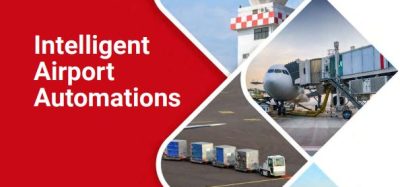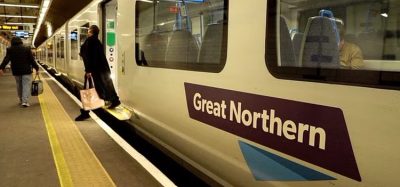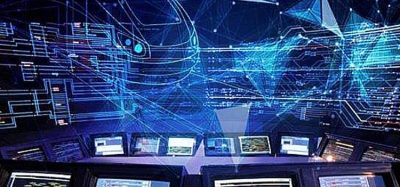Present and future TETRA use in railway signalling applications
Posted: 16 February 2017 | David Chater-Lea | No comments yet
TETRA (Terrestrial Trunked Radio) has been used for many years for communications in metro and tramway systems, and outside Europe is also being used in safety critical positive train control systems. In this article, David Chater-Lea, ETSI’s TCCE Vice-Chairman, describes the use of TETRA in railway applications, and looks to the future when 4G and 5G systems will be used alongside TETRA.


Much has been written over the years to describe the success of TETRA in the transportation industry. The TETRA standard was first released by ETSI in the mid-1990s, and was the first European standard for a digital trunked radio scheme intended to address the needs of business critical and mission critical users.
From the outset, TETRA fulfilled many of the needs of the rail community and was adopted by several metros and tramways around the world for their communications requirements. One of the advantages of TETRA is the integration of voice and data, allowing both critical control information and speech to be sent to and from the same radio terminal simultaneously. Full duplex speech calls allow safe driver-to-control room communications, as well as effective
communication with in-train passengers during emergencies. Group calls provide fast and efficient speech communication between drivers, control centres, maintenance teams, security organisations and many others. A packet data service, allowing the transport of users’ IP packets, was an early enhancement to the standard, and provides a multislot packet data service that enables any number of timeslots from one to all four on a channel to be devoted to the data service. The Short Data Service is extensively used for messaging and location applications. More recently, the TETRA Enhanced Data Service provides much higher speeds for data without any compatibility or interference issues with the standard voice and data service. Direct Mode Operation allows direct communication between on-train staff, or between on-train and trackside staff without the need for base station coverage nearby. A standardised interface on mobile and portable radios – the PEI (Peripheral Equipment Interface) – facilitates use of the radio as a modem to carry application data. The security mechanisms on TETRA were designed to be strong, with government use in mind, which is of increasing importance in the transportation market. Importantly, the services are specified in ETSI standards, which when combined with an independent interoperability testing regime overseen by the TCCA (TETRA and Critical Communications Association), allows a competitive multi-vendor supply process. Around 15 companies participate in the TCCA’s Inter-Operability Process (IOP).
In metro and tramway applications, TETRA has been consistently used for speech and data centric applications. The open interfaces have allowed different suppliers to build their own train dispatching and train control applications on top of the underlying TETRA network and terminal equipment. TETRA equipment is integrated with the on-board control and signalling systems, enabling the TETRA network to be used to report back location information from trackside and GPS location systems. Telemetry relating to the health of the train can be reported to control and maintenance systems and images from on-board camera systems can also be transmitted, for example in alarm situations.
The speech services are routinely used for on-board announcements and passenger emergency service support, as well as for communications between train and control room. TETRA has high performance group calls, with set-up times usually quoted as 300msec, for efficient staff communications (and efficient use of radio channels). The individual calling facilities are available in full duplex as well as the push-to-talk half duplex mode.
As well as track-to-train applications, the data services are used for passenger information systems. Telemetry from remote locations can ensure that the security and safety of unattended facilities are continuously monitored. Speech services are regularly used by station staff and maintenance crews. TETRA networks are extremely efficient for speech, providing up to four calls in one 25kHz channel, and with calls that are fast to set up and fast to clear, avoiding wasting airtime.
There are many examples of metro and tramway deployments in Europe. Copenhagen metro was one of the earliest adopters, with a TETRA system running at the inauguration of its first line in 2002. London Underground is the oldest metro system in the world – but also one of the first to decide to move to TETRA in large-scale usage, with a system-wide installation provided by a Private Finance Initiative contract that rolled out over 2006-2008. Outside Europe, TETRA has also been widely adopted, with many systems in the Asia Pacific and Latin America regions. There are over 50 rail projects that utilise TETRA in China alone; and TETRA is well-represented in all four of the Asian Tiger economies of Taiwan, Singapore, South Korea and Hong Kong.
For main line communications, it is a different story. The International Union of Railways (UIC) studied GSM-R and TETRA in the 1990s, and at that time consumer GSM networks were starting to be deployed whereas TETRA was still in the standardisation phase. It is therefore understandable that the decision makers felt more comfortable adopting a technology based on something that was becoming available in the market. The need for a common technology
that provided inter operability for cross border services also led to the granting of spectrum in the 900MHz band, adjacent to the mass market GSM spectrum. Until recently, there were no other options for main line rail communications. The public safety community, who were making similar decisions at the same time, adopted TETRA and obtained spectrum in the 380-400MHz band; and it is interesting to note that many metro systems have also been placed in the same band to aid interoperability with – and support from – the relevant public safety agencies.
Outside Europe, where there is no mandate to use GSM-R, TETRA has also been adopted for main line railway communications. Sometimes the deciding factors have included the available spectrum – the GSM-R band is not available in all countries, and TETRA is specified to operate from VHF to 1GHz. TETRA networks are most commonly installed in the 400MHz bands, and this provides some economies compared with GSM-R due to the greater ranges from base stations that are obtainable at lower frequencies. Additionally, owing to the much greater volumes of TETRA equipment – there were a total of 5.7 million shipped by the end of 2016 (IHS report, 2016) – there are economies in the equipment costs as well. For example, TETRA has been successfully deployed on high-speed rail lines in Taiwan and Korea for a number of years, operating at speeds of up to 300km/h. TETRA networks have also been deployed for Positive Train Control systems, similar to the ETCS (European Train Control System) deployments in Europe. The Kazakhstan Railways have employed a TETRA system providing safety critical signalling equivalent to ETCS Level 3, to take advantage of the mission critical voice functionality of TETRA in addition to its data capabilities, and to provide an economical coverage solution in UHF spectrum over difficult terrain. In Latin America, Ferrocarriles del Norte de Colombia
(FENOCO) has made a similar step toward providing a Positive Train Control system compliant with US requirements over a 193km section of track. In Australia, the Roy Hill iron ore mining project uses a TETRA system to report multi-constellation GPS positioning information as part of a moving block signalling system, which may lead to autonomous operation in the future.
In Europe, TETRA has not been used for main line track-to-train communication purposes until now. However, Finland, faced with the costs of replacing an aging GSM-R network, has decided to migrate from the GSM-R network to the national VIRVE TETRA network, which is deployed for public safety and government use. There are obvious economic benefits in doing this – the network is already deployed and has excellent coverage as required by the public
safety agencies that already make use of it. It saves investment in a replacement GSM-R network at a time when the rail industry is starting to consider what would be the next appropriate technology to replace GSM-R, given that GSM-R technology is reaching the end of its life. An additional benefit is reduction of interference: because the GSM-R frequency allocation is adjacent to the frequency band used by consumer mobile communications, there can be mutual interference issues that reduce the quality (and range) of communications of both networks. By moving to a technology in a completely different band,
these effects can be avoided. Of course, Finland is in a fairly unique situation in Europe using the Russian railway track gauge, and therefore does not need to satisfy the cross border train travel needs of other European countries.
Another factor which may aid the take up of TETRA in safety critical signalling applications is the completion of specifications for the use of GPRS (the General Packet Radio Service of GSM) to carry ETCS data. The TETRA packet data service provides the same capabilities as GPRS with respect to improved efficiency over a circuit switched service, and is flexible in its ability to deliver different packet latencies and bit rates with the different services (single slot packet data, multislot packet data and TEDS) available. Also, signalling vendors are already producing solutions that operate independently of the underlying radio technology, which further eases the ability to use TETRA for safety critical schemes where this is possible.
What does the future hold?
The public safety community, who were one of the driving forces behind the development and adoption of TETRA, are looking to find ways to provide broadband communications. In most cases, these are desired to operate alongside TETRA networks, with the TETRA networks continuing to provide mission critical speech and wide area coverage, and for these broadband communications to supplement the TETRA services with high speed data services. Considerable investigation has taken place both with ETSI TCCE (TETRA and Critical Communications Evolution) and in the TETRA and Critical Communications Association, the sector association. Early work was carried out within ETSI to define the user services required, and to calculate the amount of spectrum needed to carry public safety services. It was decided that the mission critical industry was too small on its own to develop its own radio technology for mission critical broadband use, and that 3GPP defined LTE (otherwise known as ‘4G’) would be the best radio solution provided suitable enhancements could be made to enhance mission critical aspects. Additionally, consideration was given to continue mission critical service standardisation, which started in ETSI TCCE, within 3GPP to embrace the global market. 3GPP responded by starting up a new working group – the first new group within 3GPP for more than 10 years – which has the responsibility for architecture for mission critical solutions. This group, SA6, started work at the beginning of 2015.
Within 3GPP so far, one release (Release 13) has completed the standards work which provides the first push-to-talk solutions for mission critical use (MCPTT). This first release is an initial step on the journey, and provides basic PTT speech services. Enhancements are being added in Release 14, and the first aspects of mission critical video and data are being developed. This may sound slightly odd, as 4G LTE is already a very good ‘data pipe’ for video and data, but it needs enhancing to provide interoperable, prioritised services and group communications. Due to the relatively frequent nature of 3GPP releases
and the complexity of mission critical solutions, it is likely to be following Release 15 in late-2018 before services are reasonably complete and ready for product implementation for use in critical situations. This fits well with industry predictions of the first standards compliant mission critical systems being available around 2020. Meanwhile within ETSI, recognising the need for interworking between TETRA and mission critical applications over LTE, work has started to define the interworking standards which will enable TETRA systems to work in parallel with mission critical applications over LTE.
It is likely that the future of railway communications – both signalling and speech – will lie within the 3GPP roadmap. Similarly to the public safety community, the rail industry is too small on its own to develop specific new radio technologies. The first specific rail work study item, Future Railway Mobile Communication System (FRMCS), is under way in 3GPP and will study whether the mission critical features already in standardisation can suffice or if more are needed for the rail community. This study is based directly upon UIC’s Future Railway Mobile Communication System – User Requirements Specification1. However, mindful of the lessons of the past, a separate offshoot of a mainstream development is not attractive, and the approach taken by the mission critical community of developing standardised applications together with the minimum necessary set of enhancements to the underlying platform is preferable. Of course, by doing this within the 3GPP standards body, the solutions will also extend to next generation 5G services as well as the 4G services which are the current baseline. It is hoped, therefore, that the railway industry can join forces with the public safety community to work within the standards bodies to find a common mission critical solution which generates the best economies of scale to meet their mutual needs.
Reference:
- www.uic.org/IMG/pdf/frmcs_user-requirements.pdf









